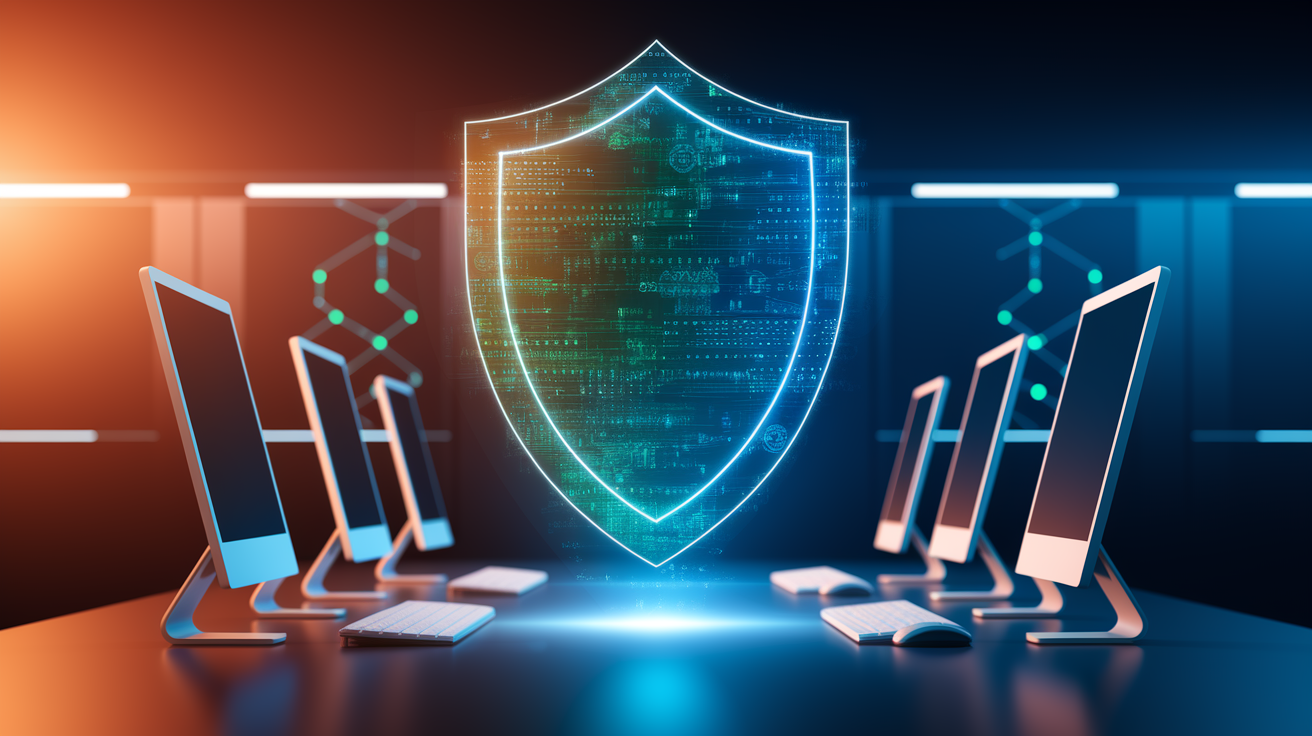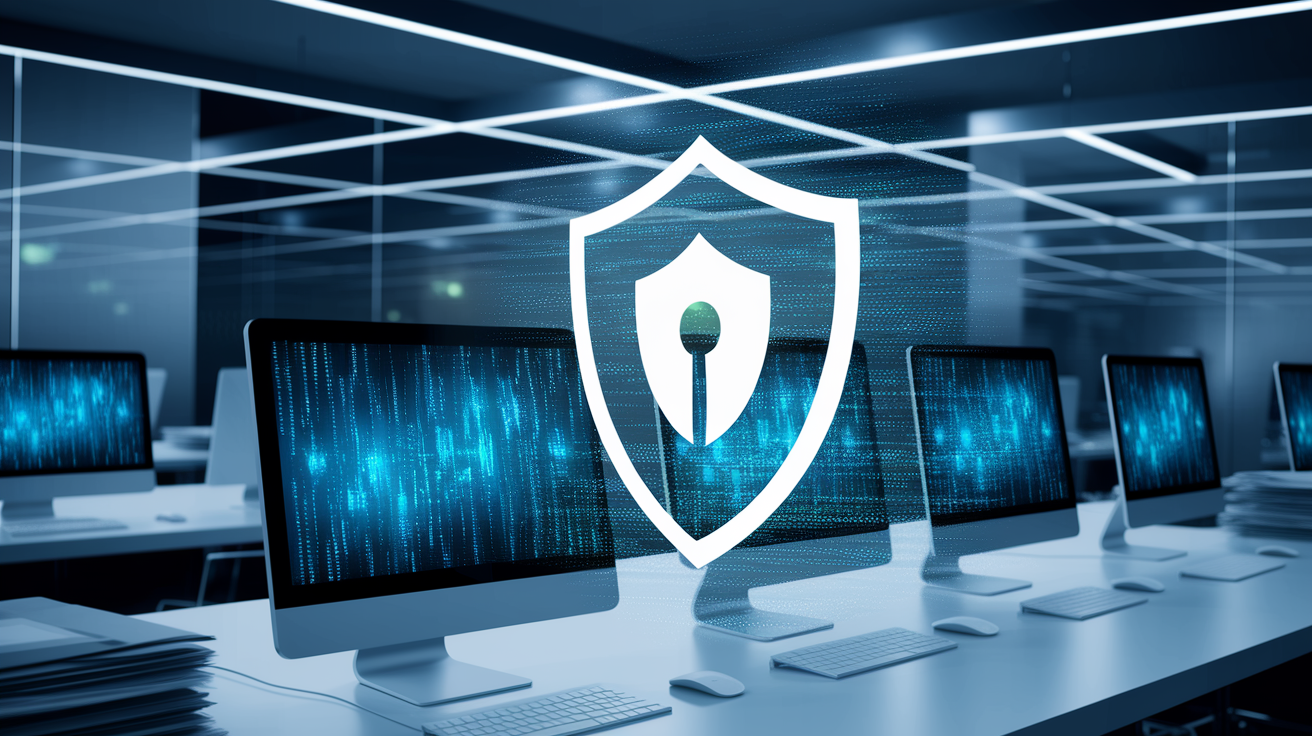In a digital world where data is the new gold, cybersecurity is more than just a buzzword: it is a necessity. Businesses and individuals face a myriad of threats, ranging from AI-based attacks to phishing. This article highlights the risks and costs for both groups and illustrates effective protective measures. Dive into the complex world of cybersecurity and discover how to safeguard your digital treasures.
The Fight Against Cyber Attacks: Strategies for Defending Against AI-Based and Ransomware Attacks in Businesses

The increasing challenges of cybersecurity in 2025 represent an existential threat to businesses. In particular, AI-based attacks and ransomware are at the center of concerns. Such attacks operate with an unprecedented level of complexity and adaptability. AI-based technologies enable attackers to bypass traditional security measures by continuously adapting to businesses’ defensive strategies. These attacks are characterized by their precision and ability to identify specific vulnerabilities in systems and networks.
To be prepared to face these threats, businesses must invest in defensive measures based on artificial intelligence. Implementing advanced security tools capable of detecting malicious activity in real-time can prevent a significant portion of these threats. Additionally, Threat-Hunting teams play a crucial role. These experts specialize in proactively identifying vulnerabilities and closing security gaps before they can be exploited. The use of advanced analytics tools also provides insights into potential attacker patterns and behaviors, allowing businesses to anticipate and defend against attacks in a timely manner. While investing in such technologies can be financially challenging, it offers a decisive advantage in protecting data and corporate reputation.
Ransomware represents another serious threat. The financial impacts of such attacks are often devastating. Double extortion strategies, in which attackers not only encrypt data but also threaten to disclose it, further pressure businesses. To be ready to face ransomware attacks, businesses should incorporate Extended Detection and Response (XDR) systems into their cybersecurity strategy. These systems detect threats in real-time, reduce damage, and support rapid data recovery. Regular backups are essential to ensure that data remains intact even after an attack and to guarantee business continuity.
In both cases, costs are significant, both direct and indirect. In addition to ransoms and system recovery costs, long-term consequences such as reputational damage must also be considered. Therefore, preventive measures and ongoing training programs for employee awareness are essential to create a solid line of defense against the growing arsenal of cyber threats. Ultimately, implementing a comprehensive and well-executed security strategy is costly, but it offers the best protection against rising cybercrime.
Phishing and Social Engineering: Effective Defensive Strategies and Their Costs

In today’s digital world, where communication is often just a click away, phishing and social engineering pose serious threats to individuals. These cyberattacks exploit psychological tricks to deceive users and steal sensitive information such as passwords, credit card information, or even personal data. Awareness and effective protective measures are essential to safeguard against such threats.
The first step in the fight against these forms of cybercrime is training. Education and regular training are crucial for raising awareness about phishing and social engineering. Users must learn to recognize suspicious emails and messages and to be cautious of them. In particular, emails from unknown senders containing attachments or links should be handled with care.
In addition to training, technical protective measures play a crucial role. Installing up-to-date antivirus and anti-malware software can reduce the risk of becoming a victim of phishing attacks. Ensuring that all applications and the operating system are regularly updated is also a must to close security gaps. The use of firewalls and VPNs provides an additional level of security by monitoring traffic and ensuring that connections are encrypted.
Another critical point is user behavior on the Internet. Passwords should be strong and unique. Implementing multi-factor authentication creates an additional barrier against unauthorized access to online accounts. Safe online behavior, such as avoiding unprotected websites and public networks, can also prevent the theft of sensitive data.
The costs of protective measures vary. Security software is available at different price points. Simple antivirus software may be free, while comprehensive security packages with additional features such as password managers or browsing protection can cost between 50 and 100 euros per year. VPN services often cost between 5 and 10 euros a month and offer secure protection through encrypted connections.
Ultimately, it is important to follow a holistic security strategy that includes both technological and behavioral measures. By combining awareness, technical protection, and conscious behavior on the Internet, individuals can significantly reduce the risk of falling victim to phishing or social engineering. Investments in security software are often low compared to the potential damages arising from a cyber attack.